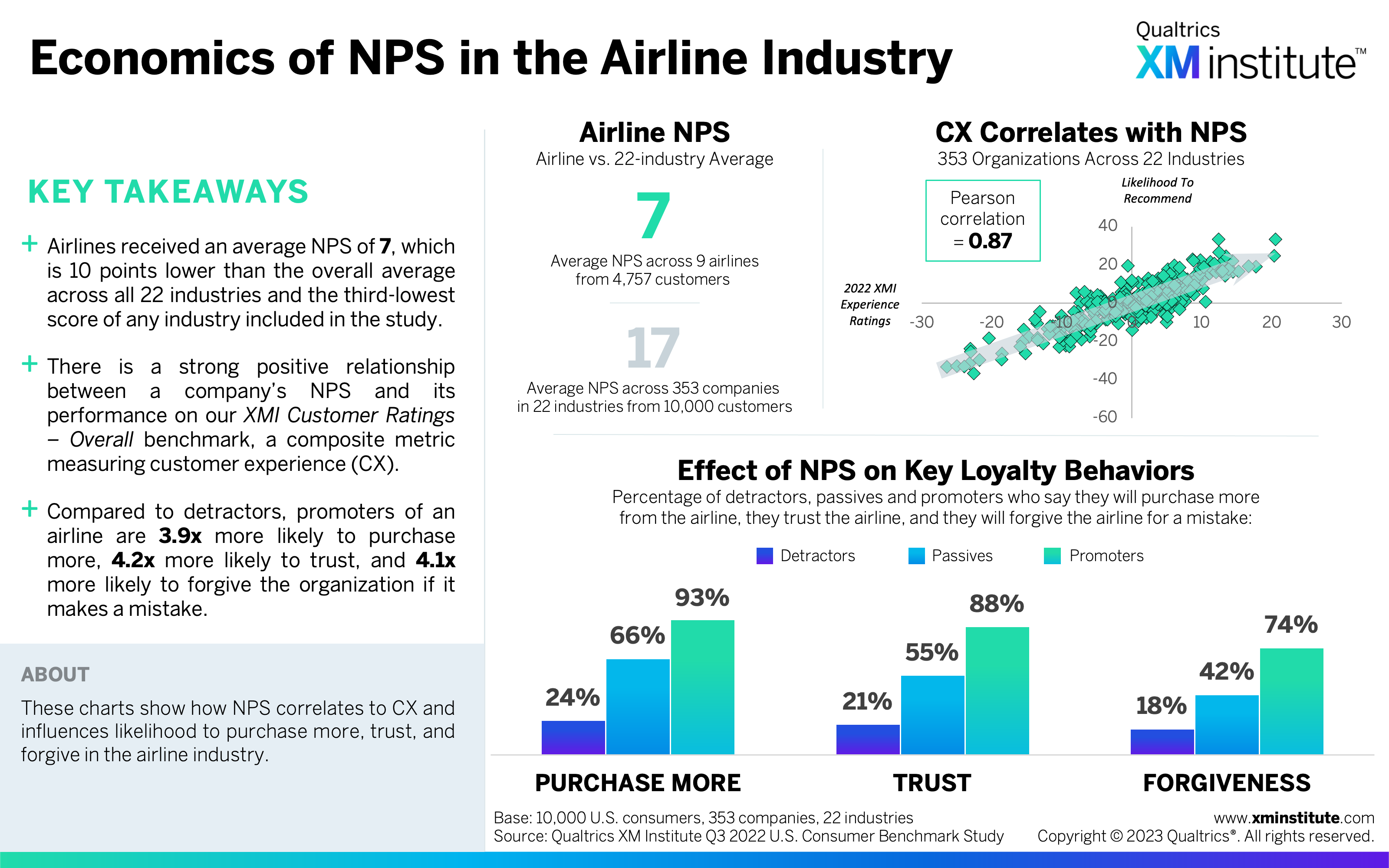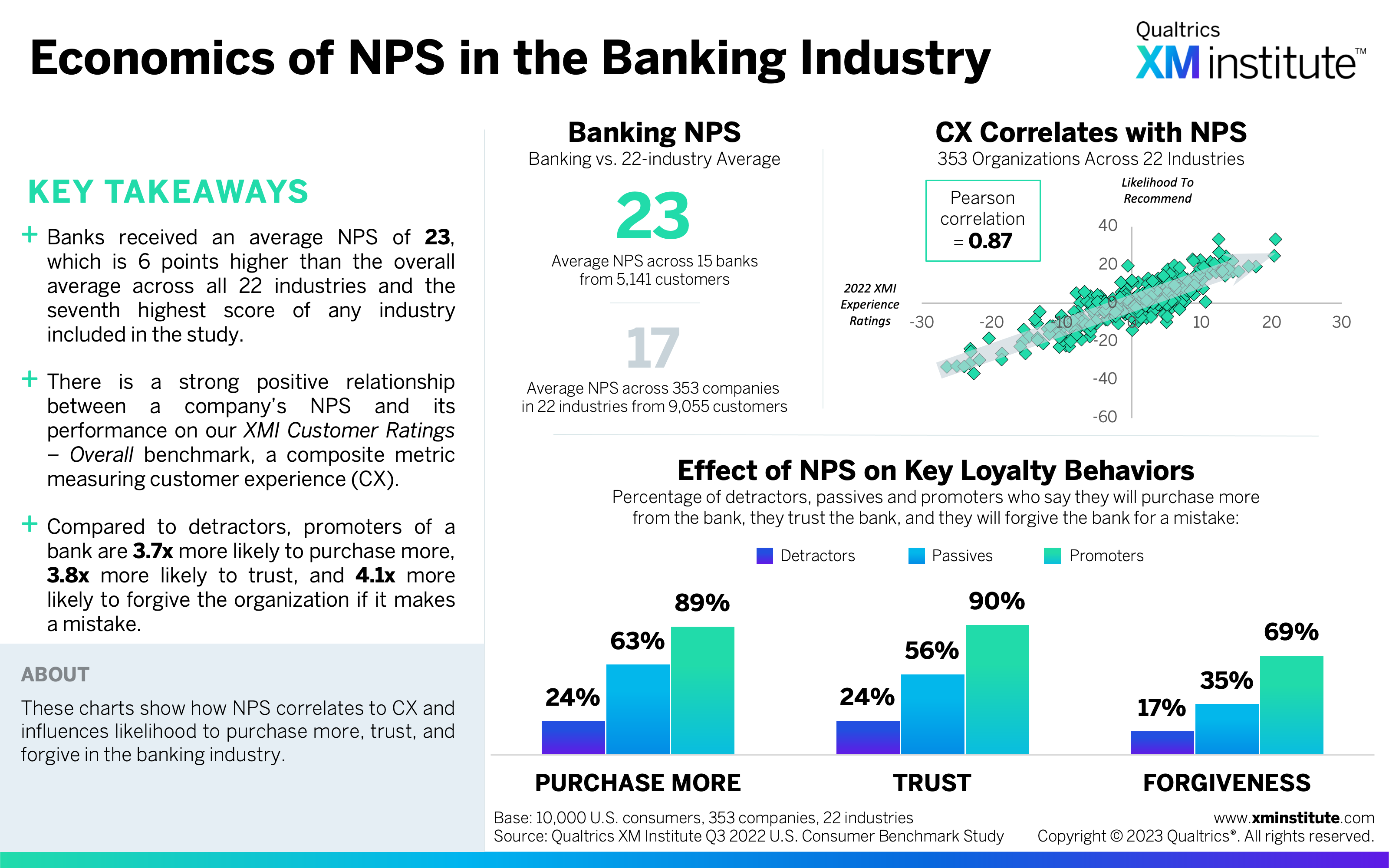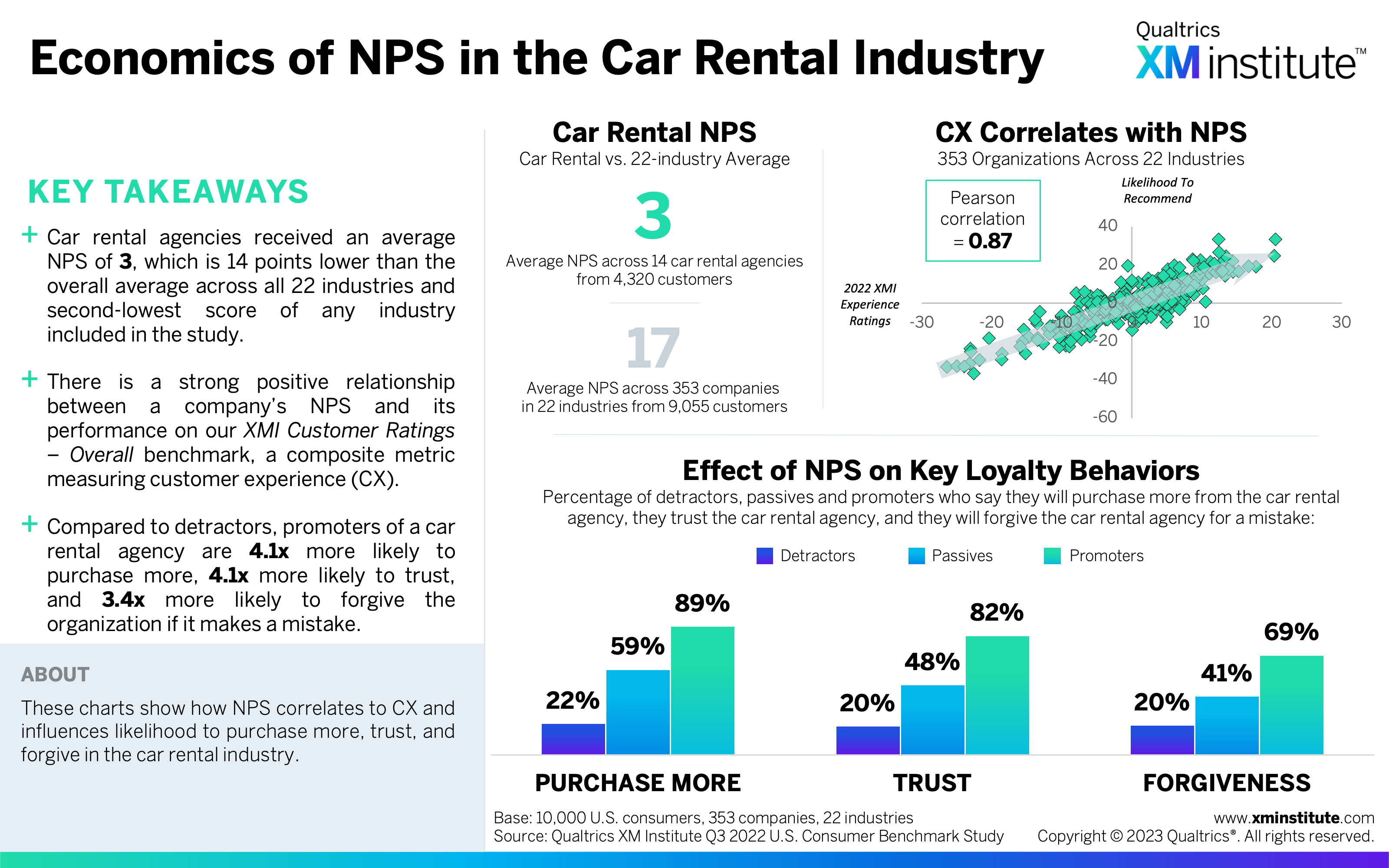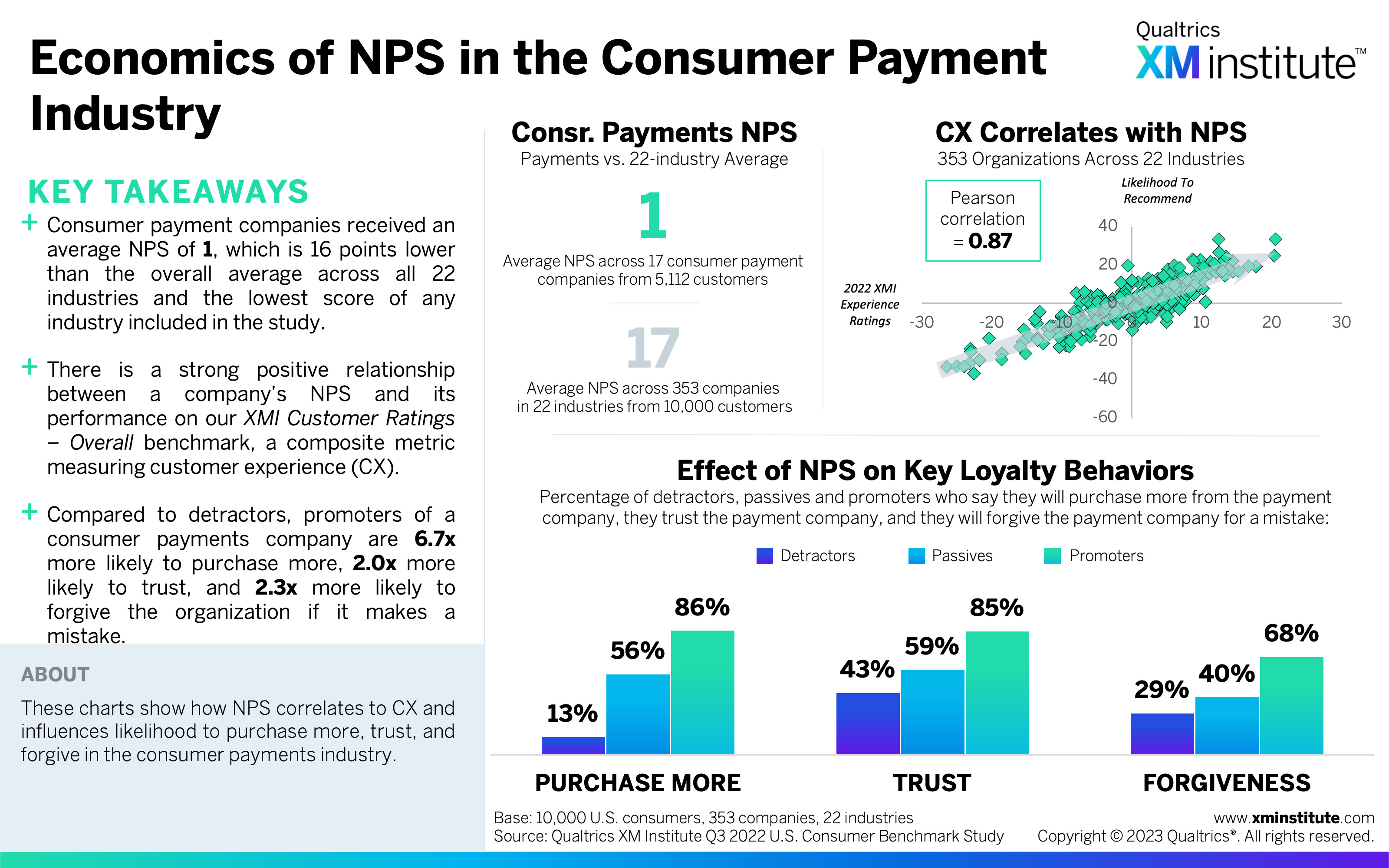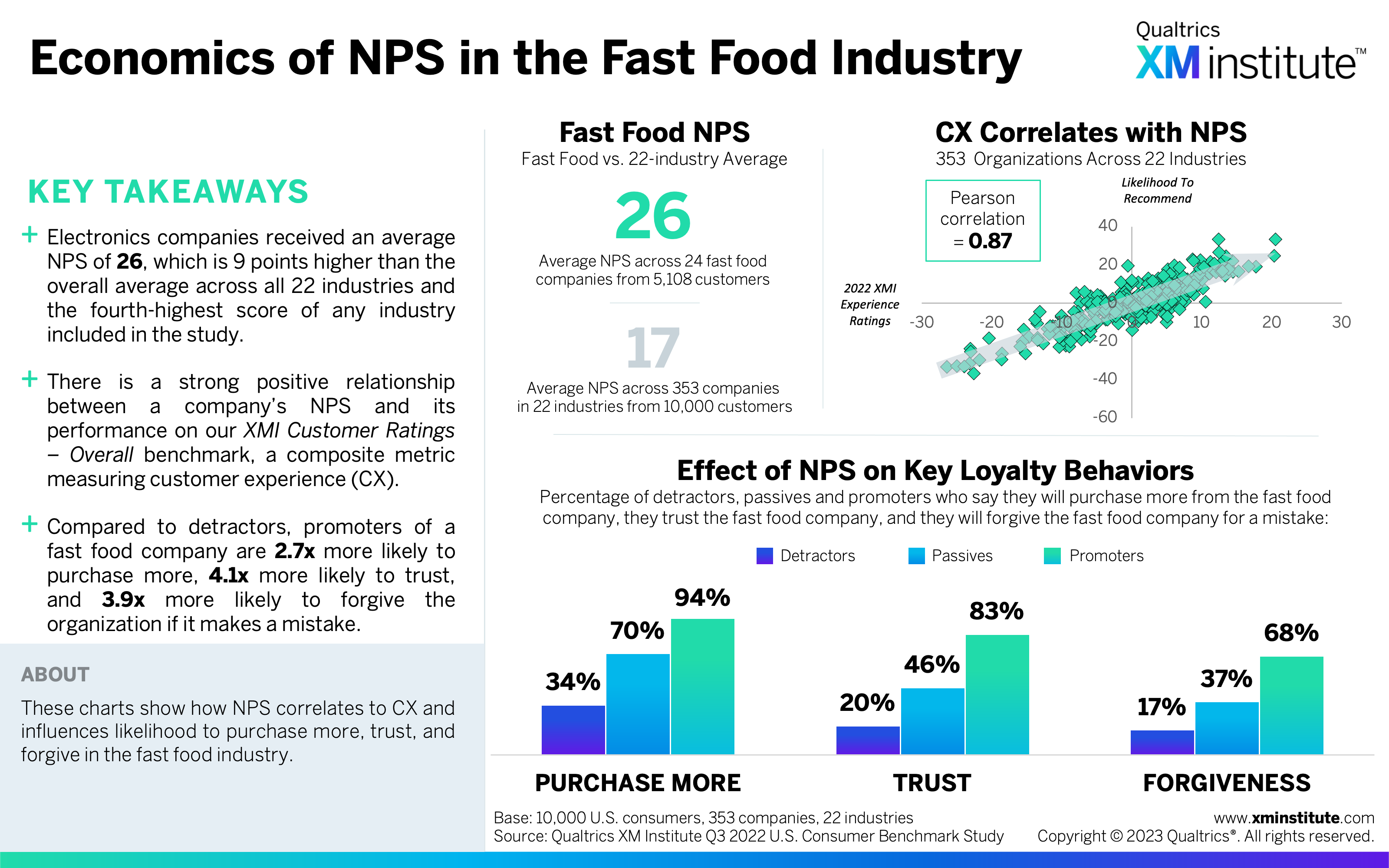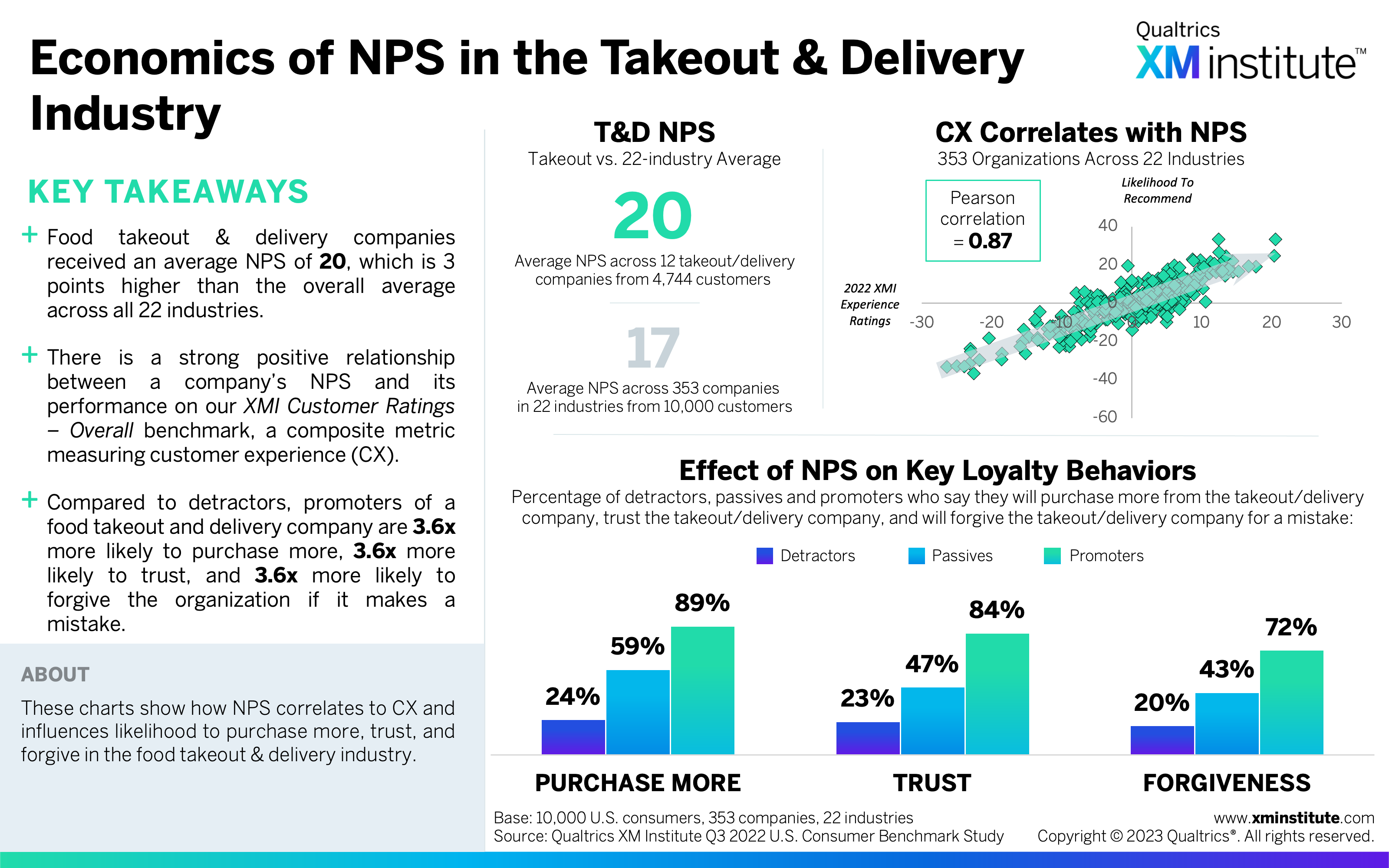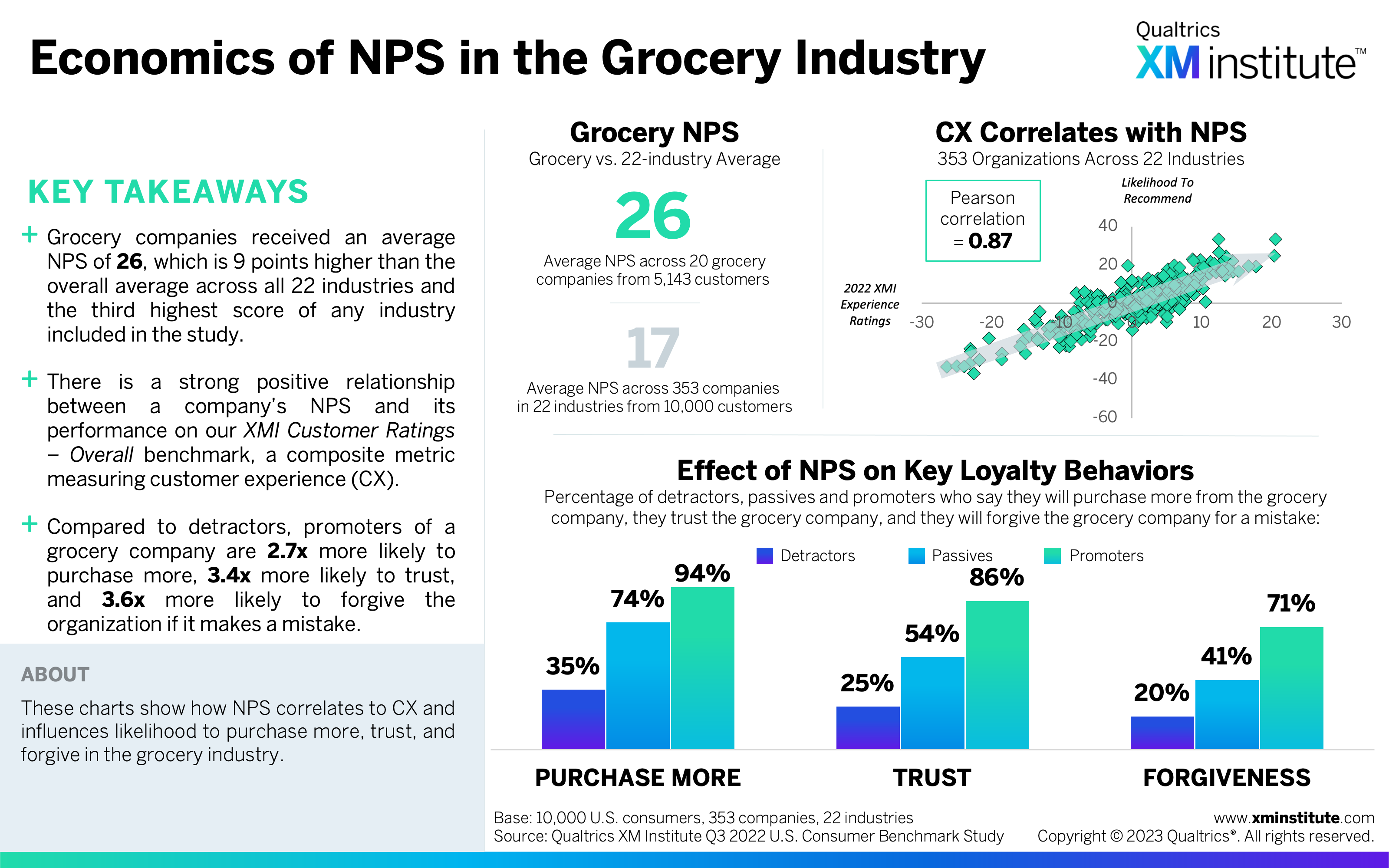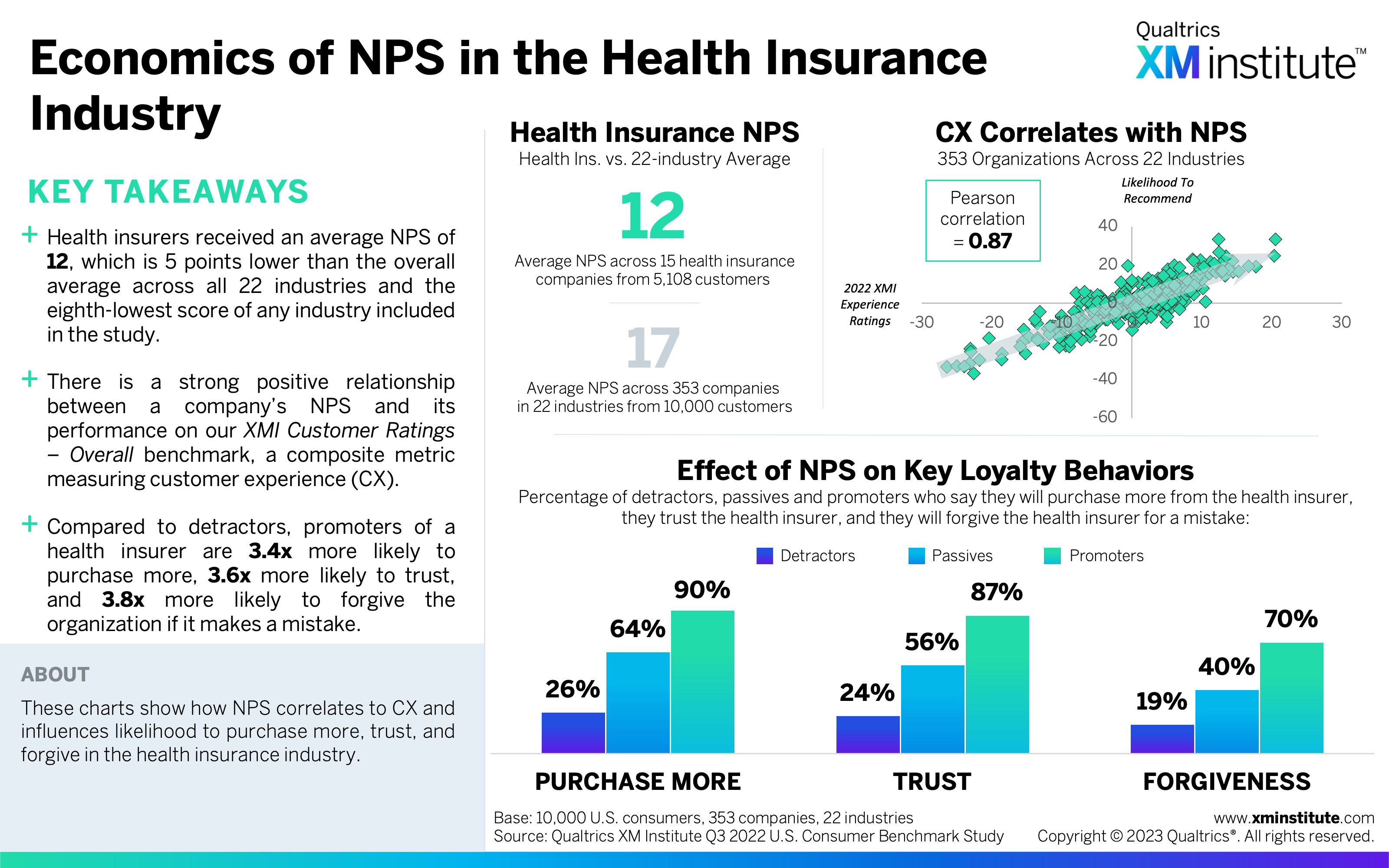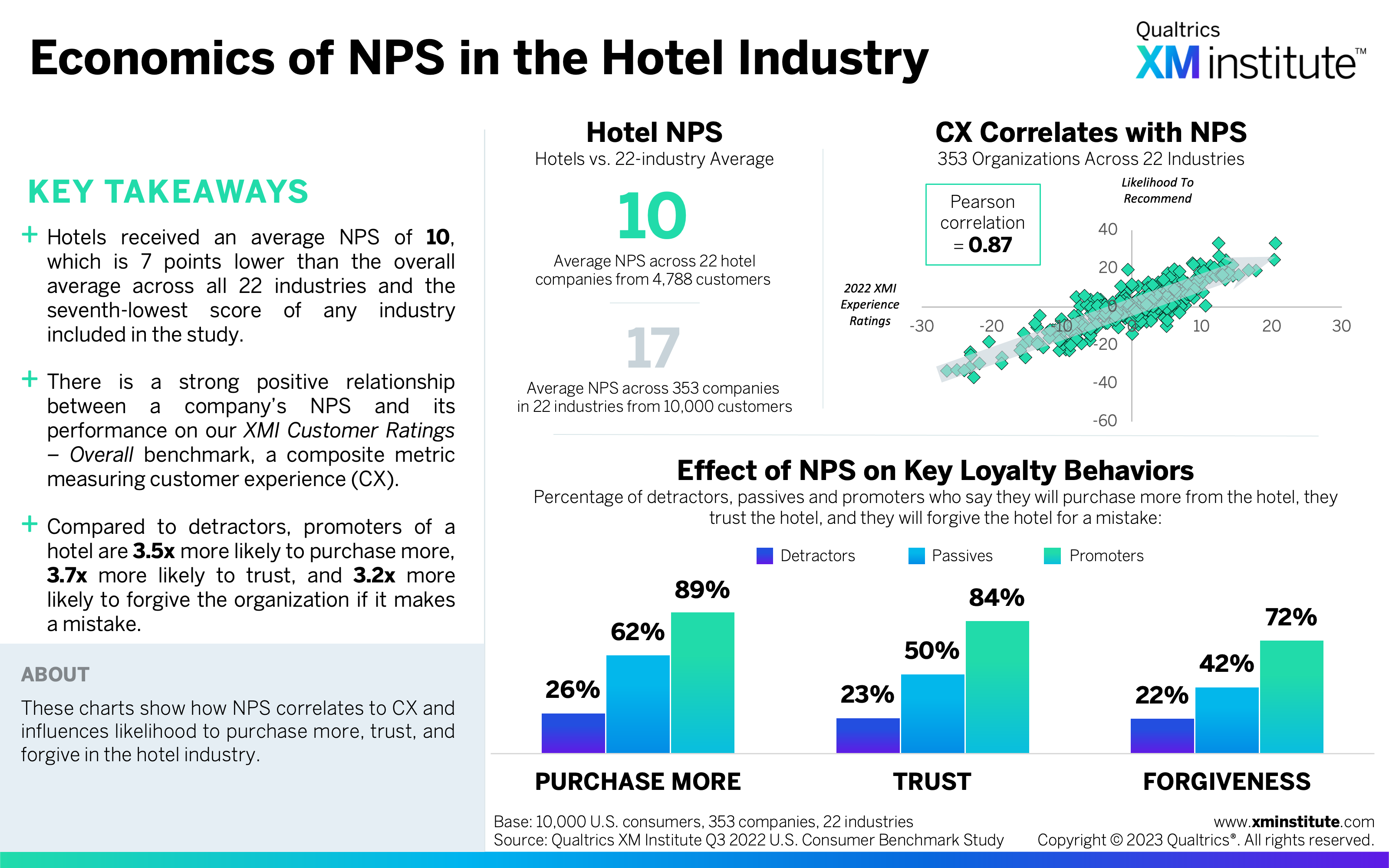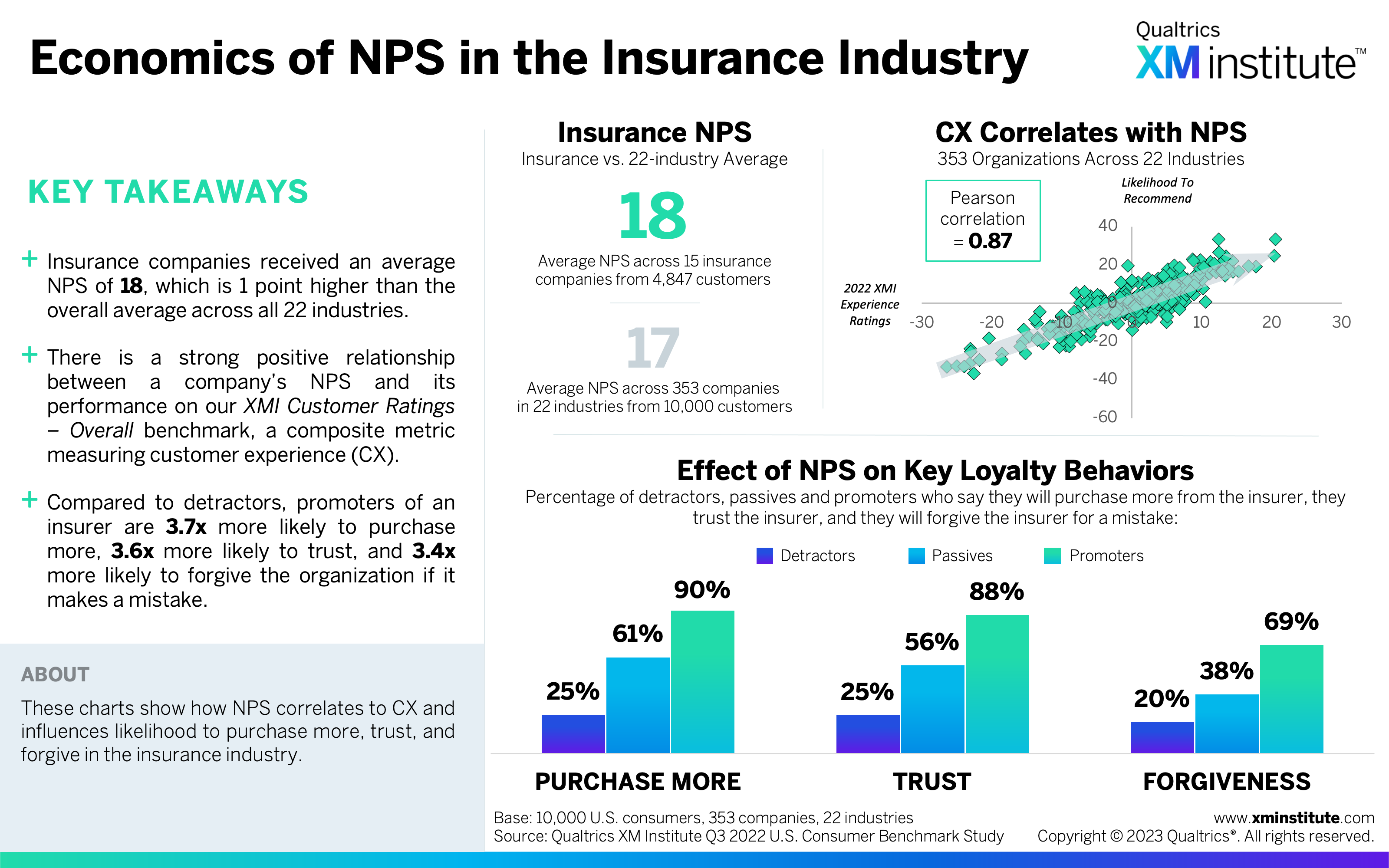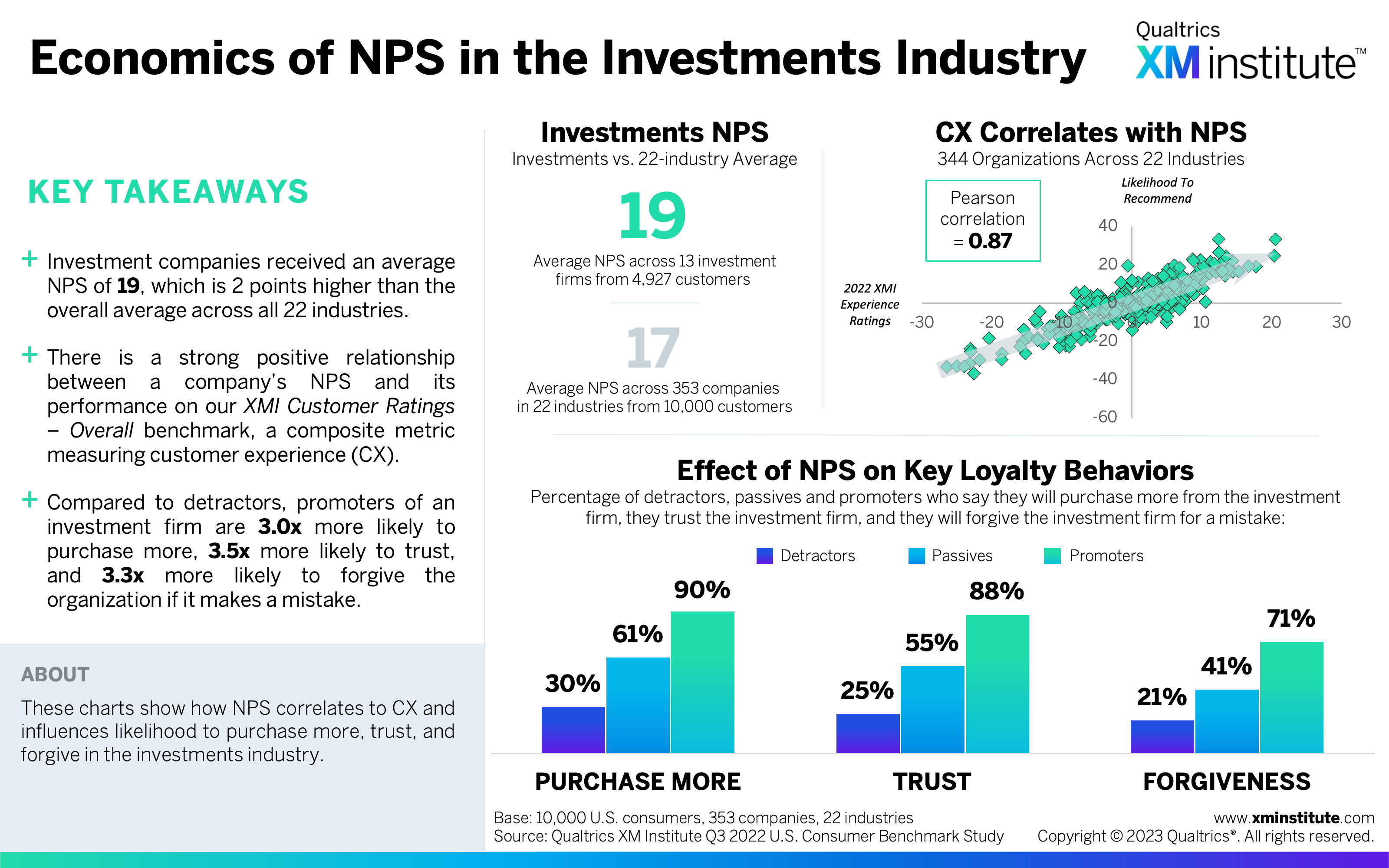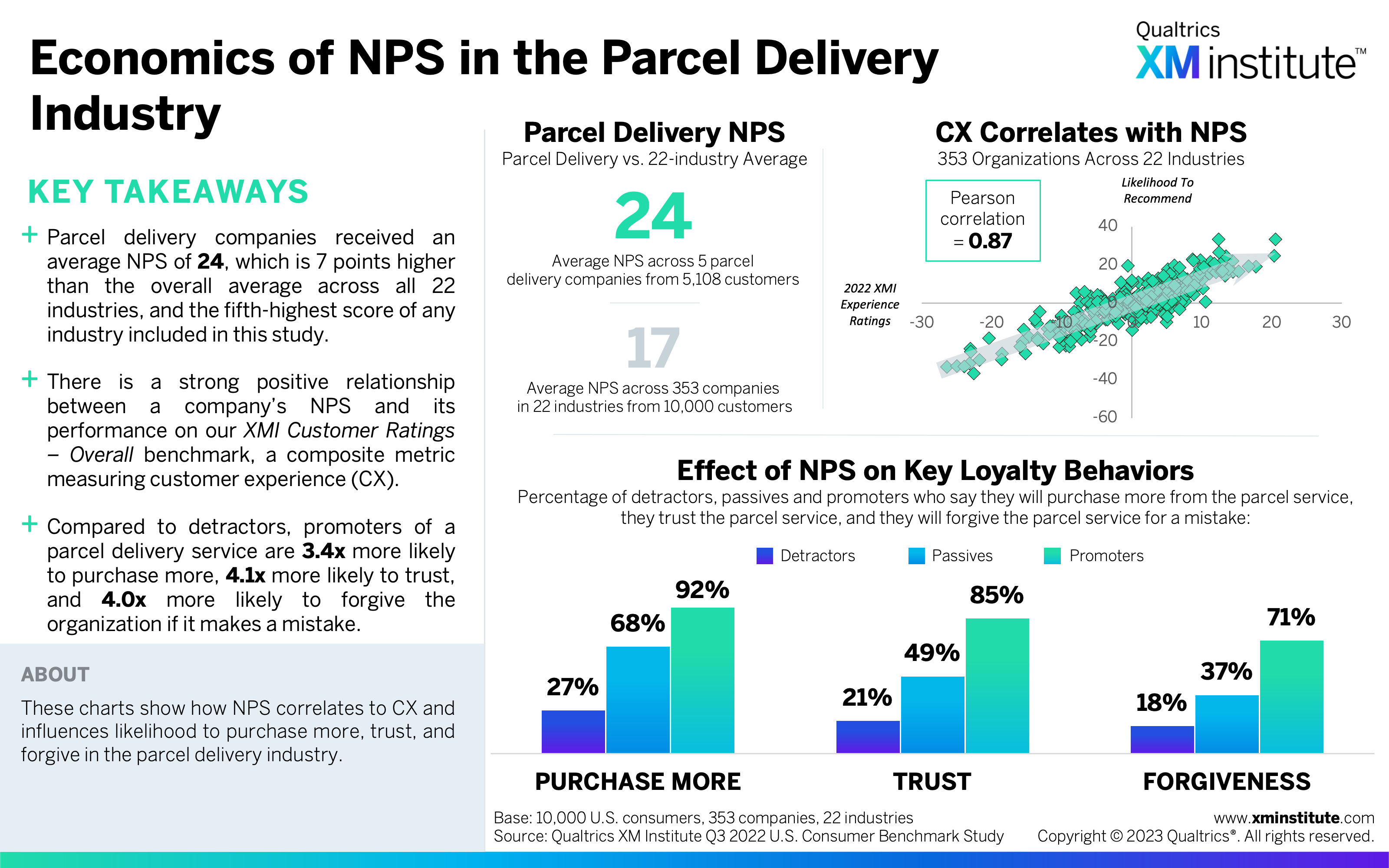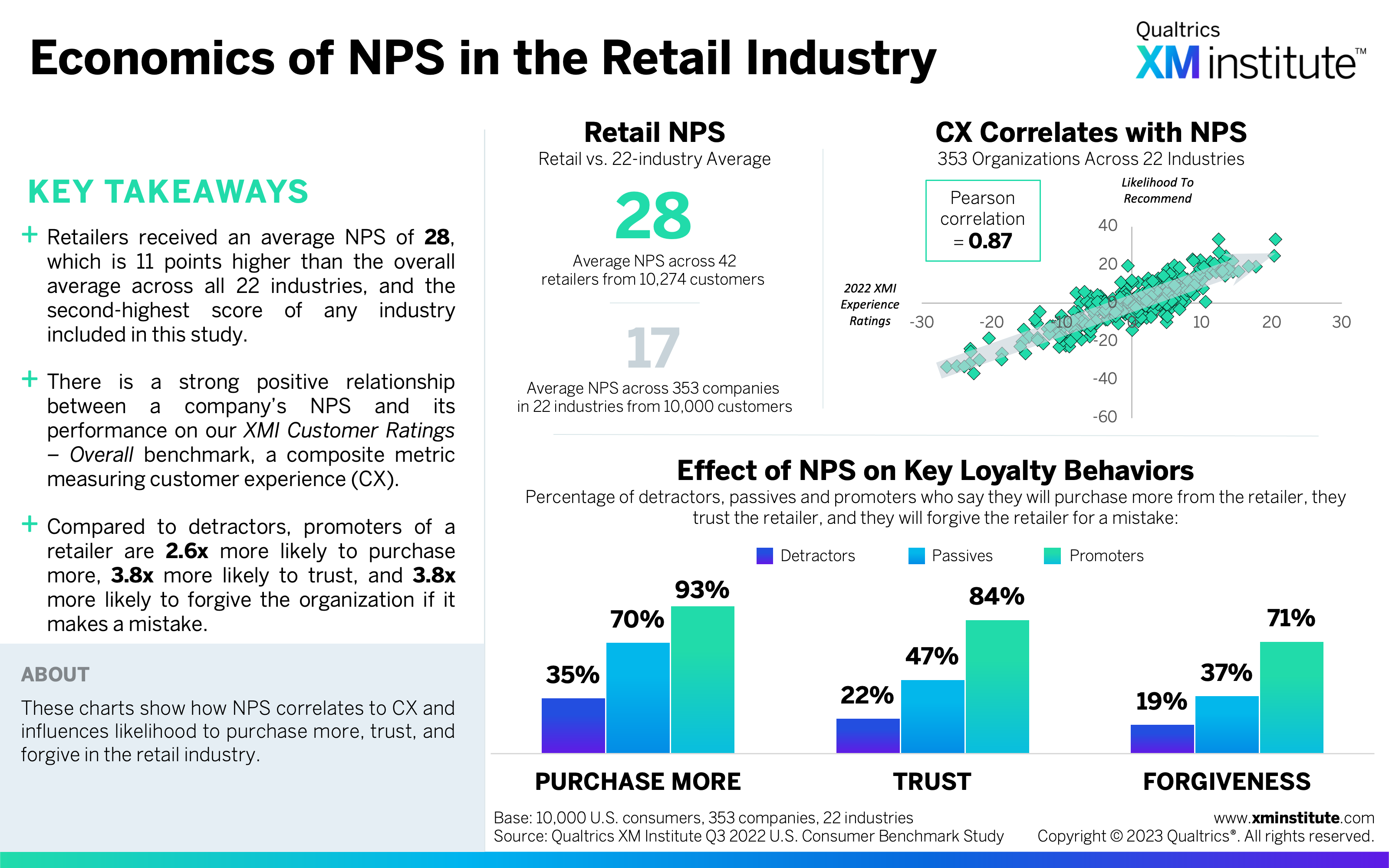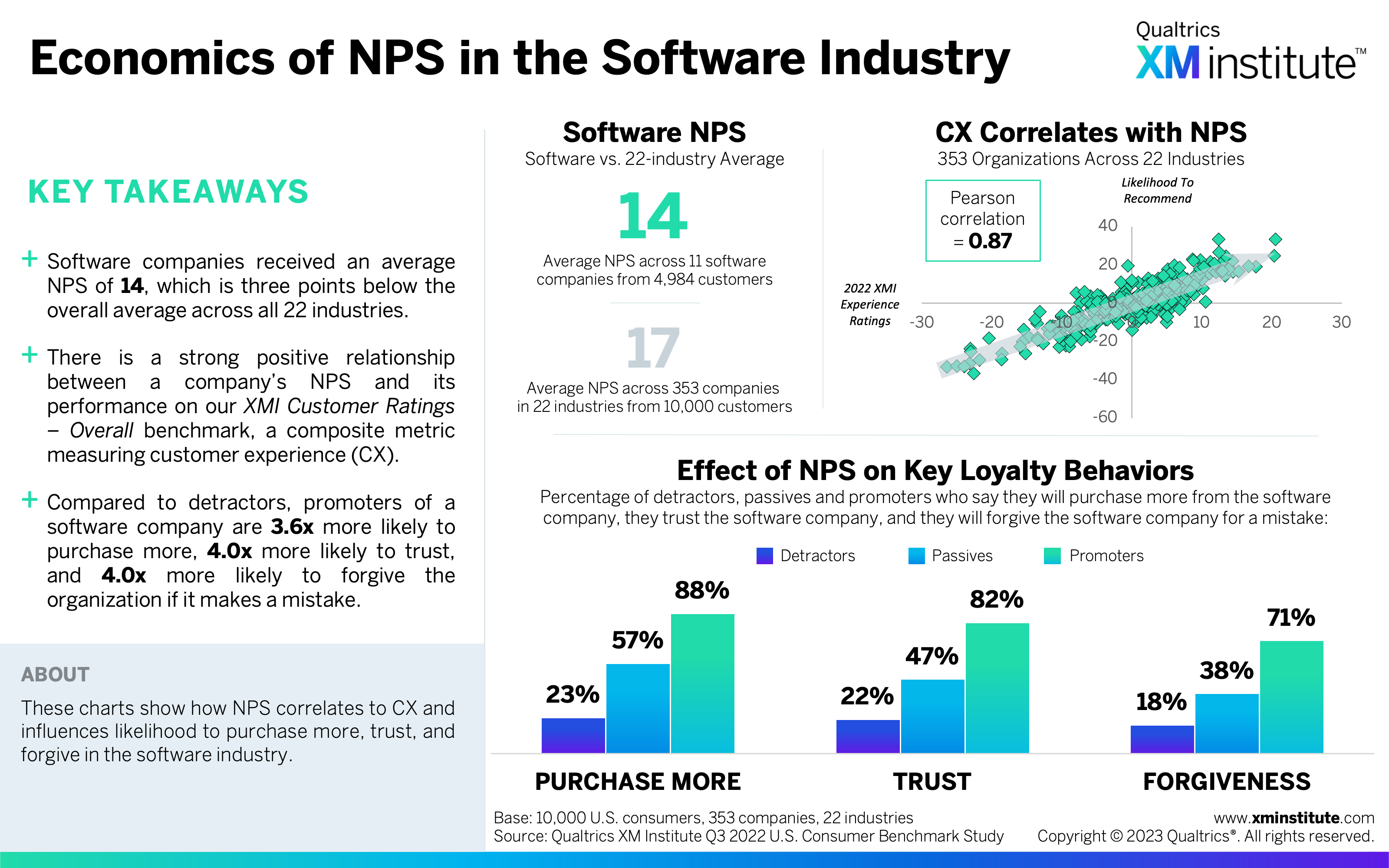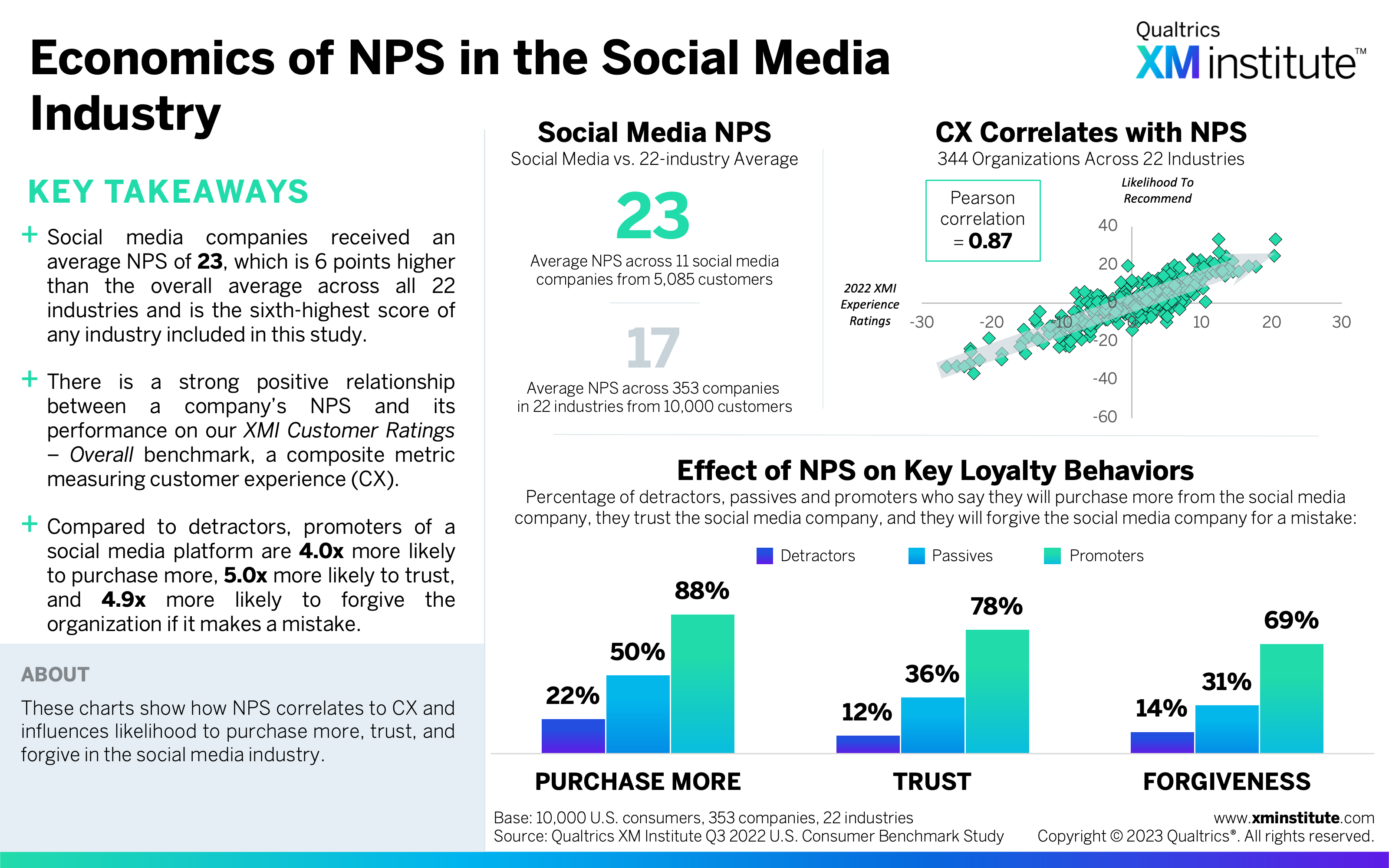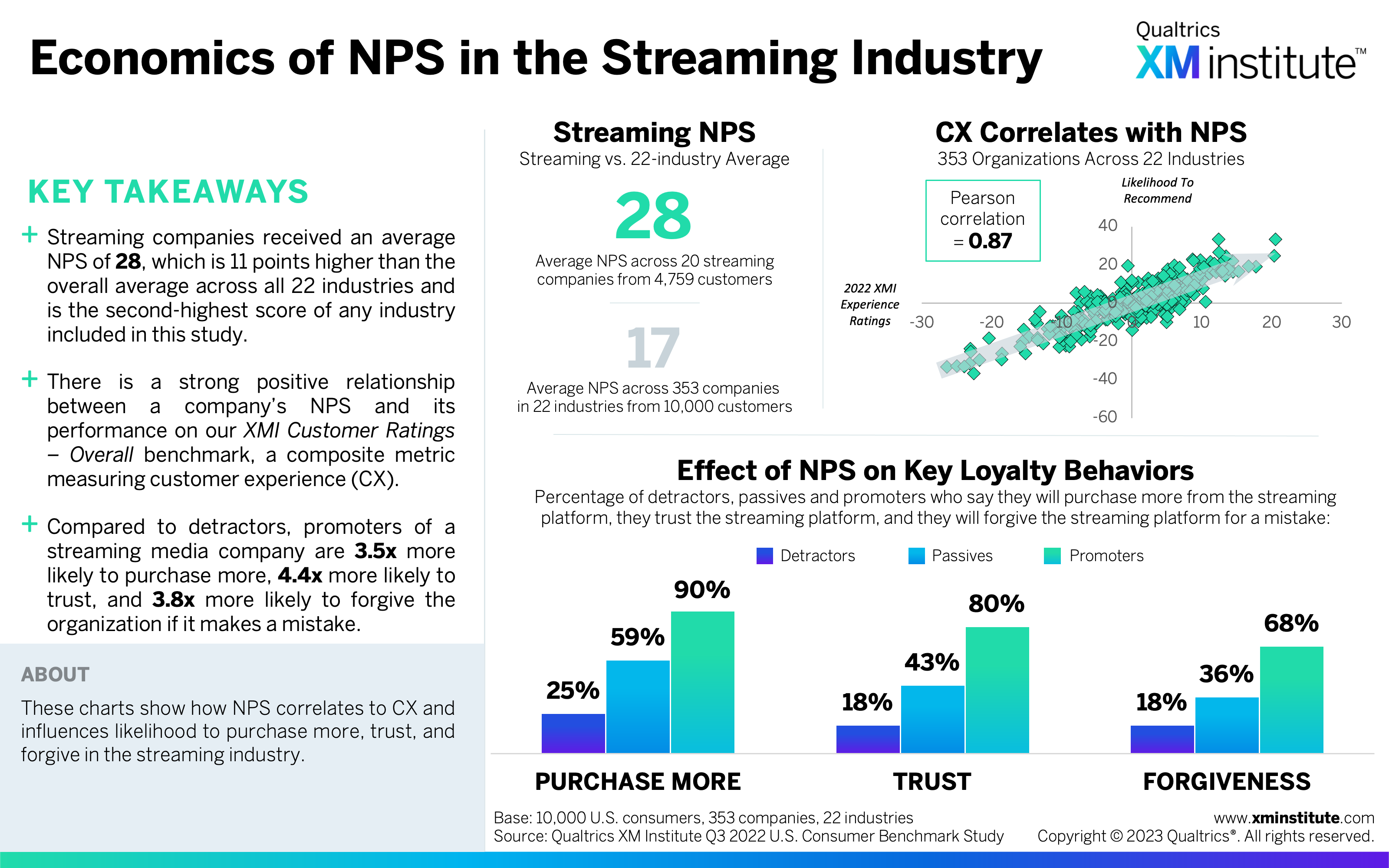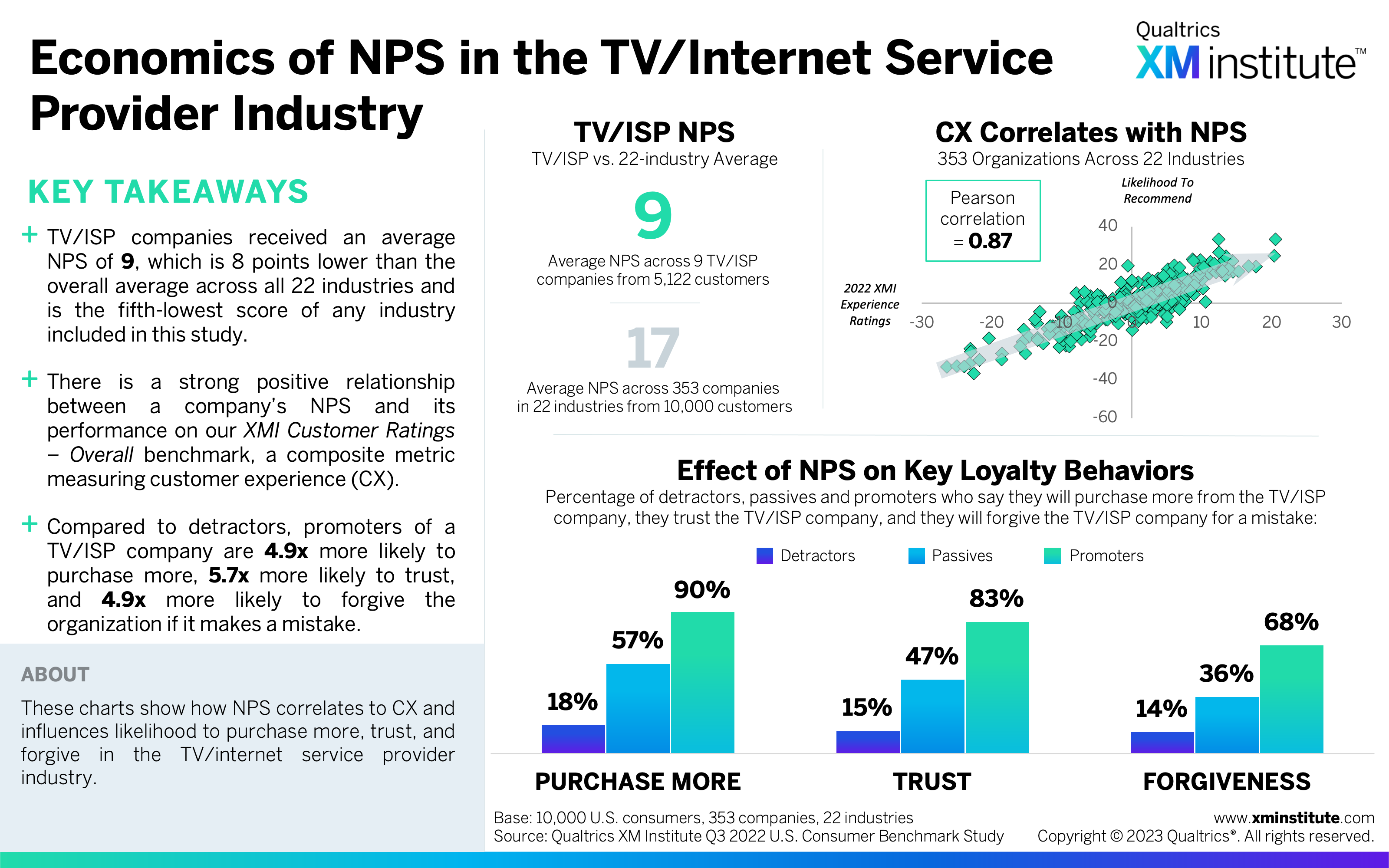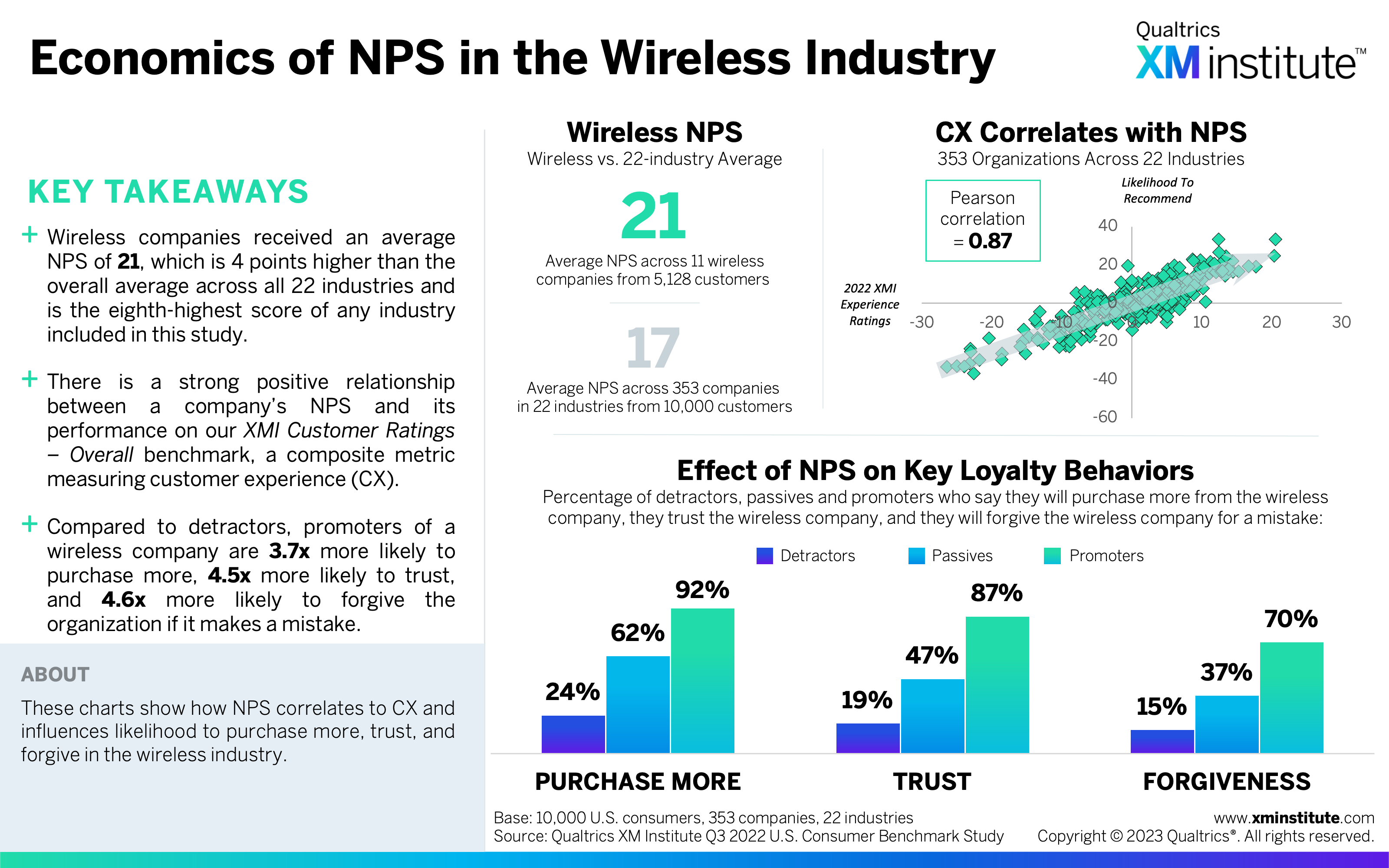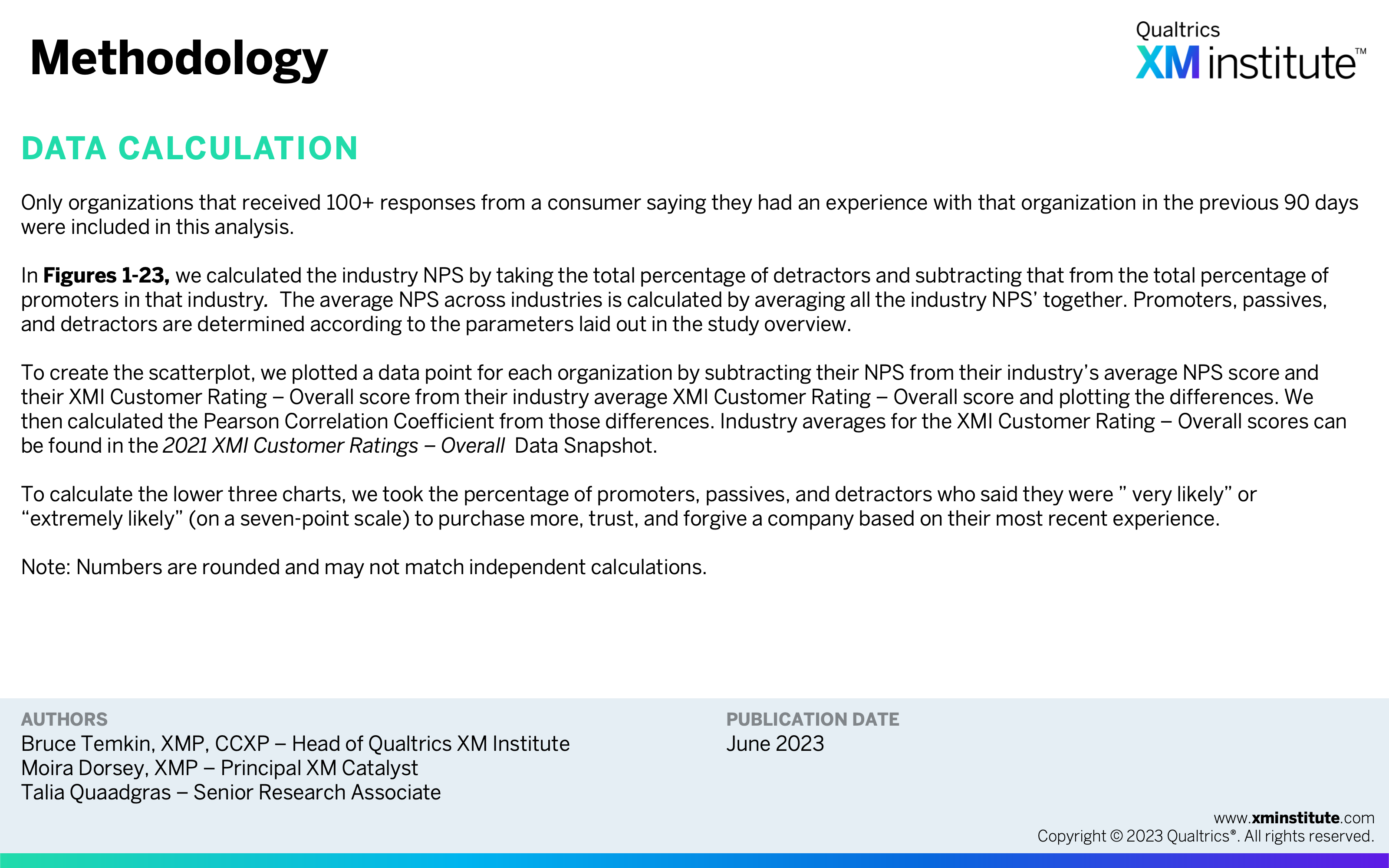Key Findings
Many organizations across the United States use Net Promoter Score® (NPS®) as a key metric to understand customer loyalty and the quality of their customer experience. In this data snapshot, we examine the relationship between NPS and customer experience and share key insights on how loyalty differs according to NPS across 22 industries. Key findings include:
- NPS and CX are highly correlated. Using the XMI Customer Ratings – NPS and the XMI Customer Ratings – Overall scores calculated for each company, we found that NPS and customer experience are highly correlated, with a Pearson correlation coefficient of 0.87.
- Retail received the highest industry NPS. The industry average for retail is 28, the highest of any industry analyzed. Streaming media and grocery come in second and third, with scores of 28 and 26, respectively. At the other end of the spectrum, consumer payments (1), car rentals (3), and airlines (7) received the lowest scores.
- Consumer payments have the largest repurchase differential. Compared to detractors, promoters in the consumer payments industry are 6.7 times as likely to say they will purchase more from the company – the largest difference across all industries analyzed, implying consumer payments have the most to gain from converting their detractors to promoters. Retail has the smallest gap, where promoters are just 2.6 times as likely to purchase more.
- TV/internet service providers have the largest trust differential. Promoters of TV/internet service providers are significantly more likely to trust the company compared to detractors; they are 5.7 times as likely to trust, the largest gap across all industries surveyed. They have a similarly large forgiveness differential, at 4.9, second only to social media (4.9). Conversely, consumer payment promoters have the smallest forgiveness (2.3 times) and trust (2.0 times) differentials.
Figures
Here are the figures in this data snapshot:
- Economics of NPS in the Airline Industry (see Figure 1)
- Economics of NPS in the Automotive Industry (see Figure 2)
- Economics of NPS in the Banking Industry (see Figure 3)
- Economics of NPS in the Car Rental Industry (see Figure 4)
- Economics of NPS in the Computer Industry (see Figure 5)
- Economics of NPS in the Consumer Payment Industry (see Figure 6)
- Economics of NPS in the Electronics Industry (see Figure 7)
- Economics of NPS in the Fast Food Industry (see Figure 8)
- Economics of NPS in the Takeout & Delivery Industry (see Figure 9)
- Economics of NPS in the Grocery Industry (see Figure 10)
- Economics of NPS in the Health Insurance Industry (see Figure 11)
- Economics of NPS in the Hotel Industry (see Figure 12)
- Economics of NPS in the Insurance Industry (see Figure 13)
- Economics of NPS in the Investments Industry (see Figure 14)
- Economics of NPS in the Parcel Delivery Industry (see Figure 15)
- Economics of NPS in the Retail Industry (see Figure 16)
- Economics of NPS in the Software Industry (see Figure 17)
- Economics of NPS in the Social Media Industry (see Figure 18)
- Economics of NPS in the Streaming Industry (see Figure 19)
- Economics of NPS in the TV/Internet Service Provider Industry (see Figure 20)
- Economics of NPS in the Utilities Industry (see Figure 21)
- Economics of NPS in the Wireless Industry (see Figure 22)
- Methodology (see Figure 23)


